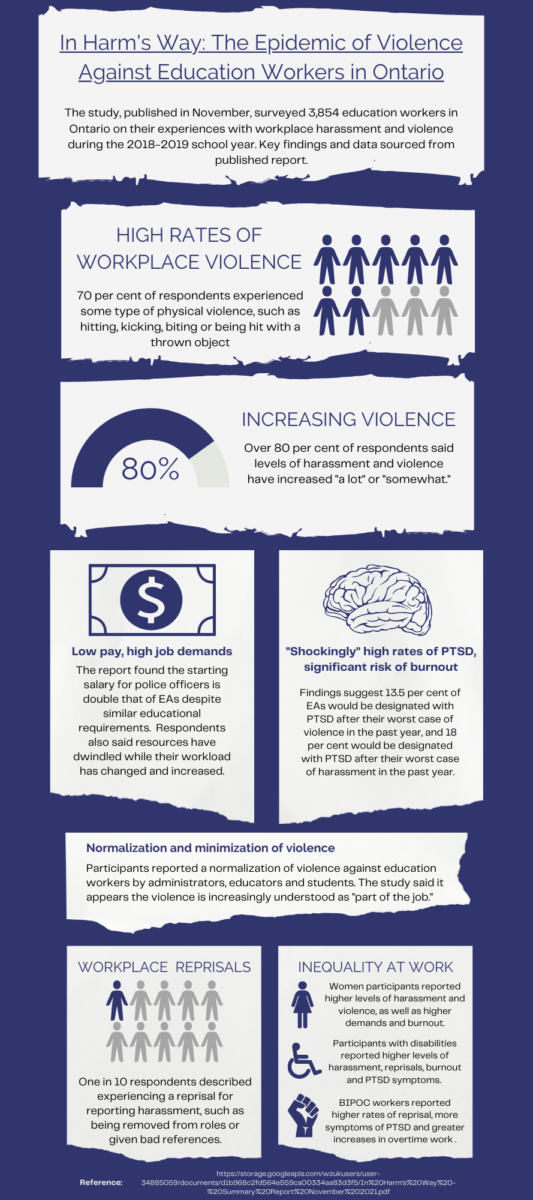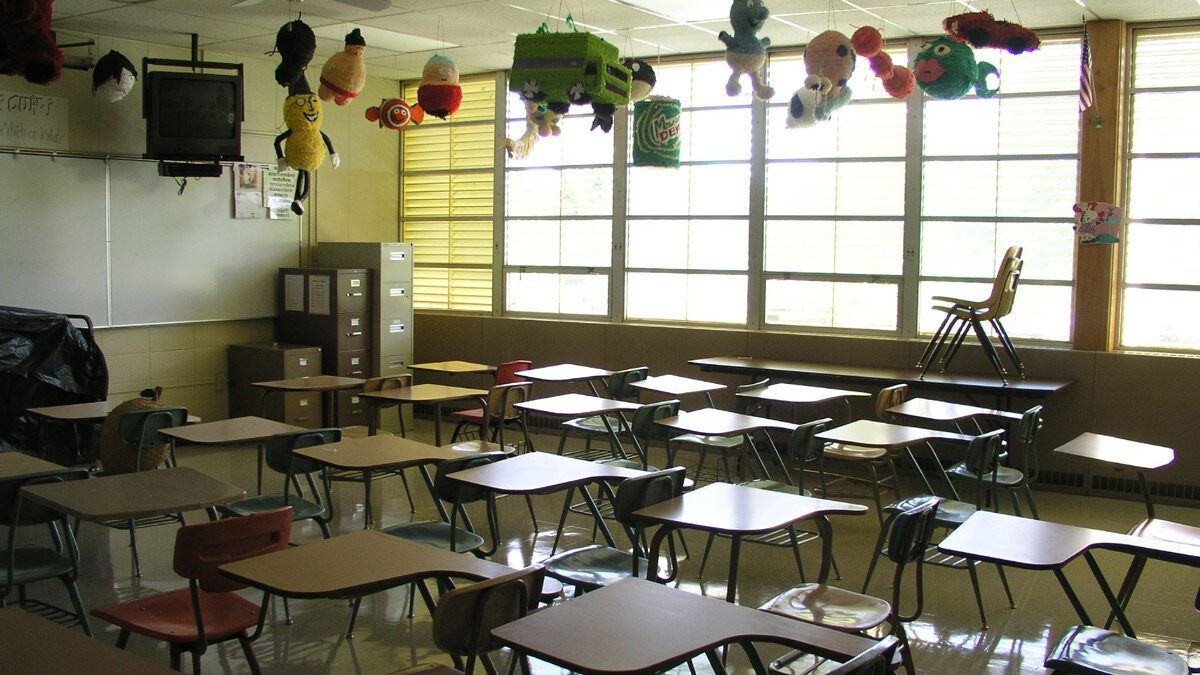Experts and advocates say that throughout the pandemic, Ontario education workers who work with young or special needs students struggled with workplace harassment and violence.
Cynthia Steeves is a former educational assistant (EA) of 17 years and the acting president of CUPE 2357, which represents workers at the Ottawa Catholic District School Board. She said while teachers and students were online during school closures, EAs stayed in-person with special needs students who could be violent or lash out.
“I would say [the violence] didn’t really change too much,” Steeves said. “It might’ve changed a little bit because not many kids were coming to school, but it was still very much there for sure.”
But the issue was present even before the pandemic. A study published in November by University of Ottawa researchers found of 3,854 education workers, 89 per cent said they experienced a threat, attempt or act of physical violence during the 2018-2019 school year.
The survey also found high rates of harassment and verbal violence. Results suggest that in any single year, 95 per cent of classroom-based or support staff workers could experience some form of harassment from students, parents, colleagues or administrators.

That harassment continued during the pandemic, said Steeves, noting workers faced verbal abuse online from parents who sat in the background and listened to their children’s classrooms.
“And they’re coming right in and ripping a strip off of you in front of students, so there’s definitely been escalated verbal harassment from parents when you’re virtual learning as well,” Steeves said.
Other key study findings include a normalization of violence against education workers, severe injuries, significant risk for occupational burnout and higher rates of reprisals from administrators towards BIPOC workers and workers with disabilities.
Laura Walton was an EA for almost 20 years before becoming president of the Ontario School Board Council of Unions, which represents 55,000 education workers. She said a common misconception is EAs work with young children.
What’s frustrating for us is these violent incidents don’t have to happen. And that’s what’s being missed in all this.”
Laura Walton, president of the Ontario School Board Council of Unions
In the Ontario school system, she said they work with students anywhere from ages three to 21 because of their special needs. One of her violent experiences came from an 18-year-old student who was 6-foot-5.
“I think I stepped foot into the school once following that incident,” Walton said. “And it was after the school no longer had students in it. It was just an area that I wasn’t comfortable even walking into.”
“What’s frustrating for us is these violent incidents don’t have to happen. And that’s what’s being missed in all this,” she added.
Walton said COVID-19 has meant students lost two years of education, which also means two years of structure they need for success. She also said because of the pandemic, a cohort of students are entering the education system without having been to child care or day care, meaning they’ve missed an opportunity to be identified early for any special needs.
“So we have a whole issue coming out of this pandemic that needs to be addressed,” Walton said.
The survey also found demands on education workers are increasing amid staffing shortages, which Walton said have been exacerbated by the pandemic. She said there is less staff than before, meaning workers have fewer opportunities to recover following violent incidents.
The survey recommends “immediate action,” including more resources for students like early diagnoses and interventions, more EAs and smaller class sizes. It also calls for greater mental health benefits and additional training for administrators to provide meaningful support to educators.
“We have folks working overtime, they’ve been working overtime for two years,” Walton said. “So there’s this kind of underlying burnout … It’s just compounding all of the features.”
Walton and Steeves said they want more government action and funding for public services, including education and health care.
Walton also said the survey amplifies the voice of impacted workers, and she sees it as a launch point.
“I’m optimistic that this is coming out at the right time with the right stories, and that we will be able to push this because I think we can do better,” Walton said. “And we have to do better.”




